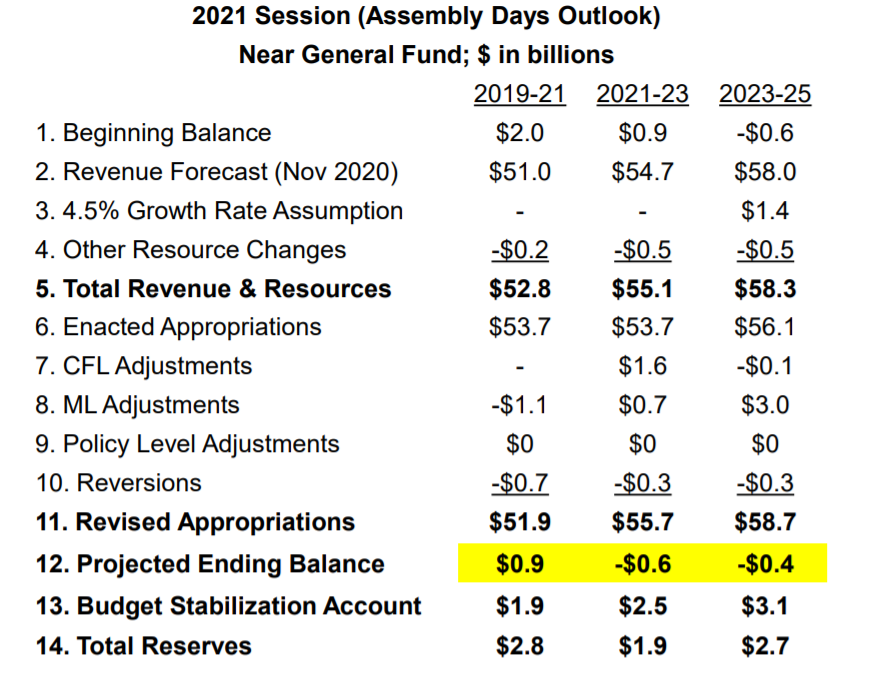1:53 pm
December 1, 2020
Yesterday’s Ways & Means Committee work session included a presentation on the operating budget, including an estimated budget outlook.
There hasn’t been an official budget outlook since April, but the House Office of Program Research produced an unofficial version based on the June revenue forecast. Since then, I have been adjusting the June outlook to reflect the latest information on revenues and spending. (My most recent estimates are here.)
As part of the November revenue forecast, the Economic and Revenue Forecast Council estimated that the unrestricted ending balance for 2019–21 would be negative $152 million. That estimate included actual reversions (appropriations not spent) for FY 2020 and assumed reversions for FY 2021. It did not make any assumptions about maintenance level changes (the cost of continuing current services, adjusted for caseloads, enrollment, and inflation).
Now, the Senate has a preliminary estimate of the maintenance level. (This figure will be refined as the budget process goes forward, with input from agencies, the Office of Financial Management, and the Legislature.) With the preliminary maintenance level, Senate staff estimates that the unrestricted ending balance for 2019–21 improves to $0.9 billion. (That’s before touching the rainy day fund.)
In the next legislative session, legislators will need to pass a 2021 supplemental to the 2019–21 budget and a new biennial budget for 2021–23. The biennial budget will need to balance over four years. So the preliminary outlook from Senate staff includes 2019–21, 2021–23, and 2023–25 (the chart below is from their presentation). Given their maintenance level estimates, the unrestricted ending balance is estimated to be negative $0.6 billion in 2021–23 and negative $0.4 billion in 2023–25. The rainy day fund balance (even before backfilling it with CARES Act funds) would easily cover those shortfalls.
Of course, there is still a lot of uncertainty here—for example, additional funding could be needed related to the public health emergency and the federal government could pass another relief package. Also, the outlook does not include any new policy spending the governor and Legislature may decide to enact.
Staff noted that reversions for FY 2020 were about double what they had been expected to be and that the state has received about $4.2 billion in unanticipated federal funds since the spring (including the state’s share of the Coronavirus Relief Fund). Additionally, the maintenance level’s impact is “less than half what history would suggest.” (I wrote about the November caseload forecast here.)

